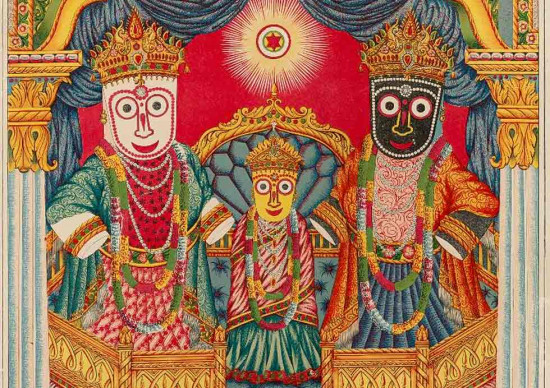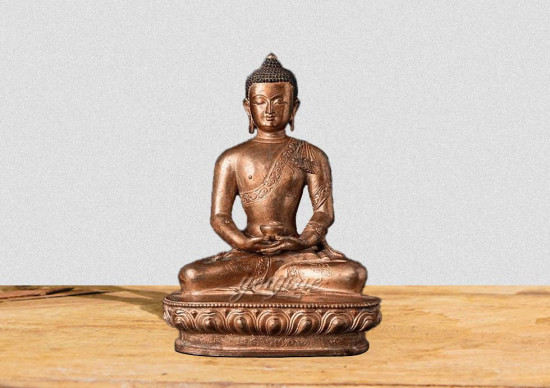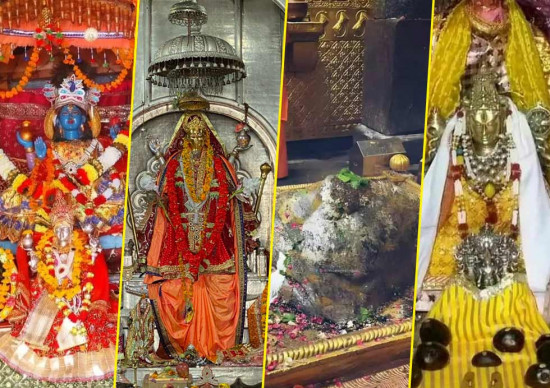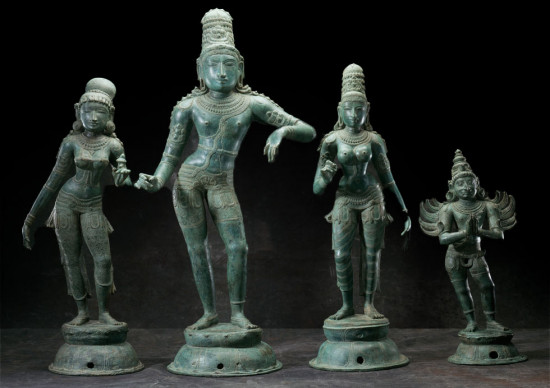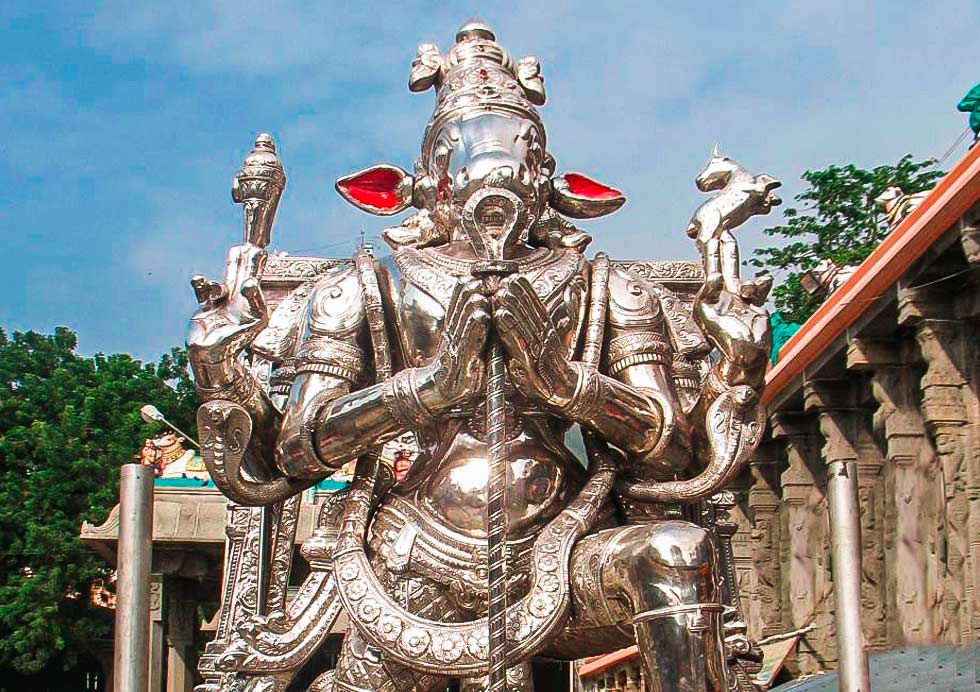
Adhikara Nandi, known simply as Nandi, occupies a revered position in the divine assembly of Lord Shiva. As the primary attendant and gatekeeper, Nandi’s significance lies in his unwavering devotion and loyalty to Shiva. The very name “Adhikara ” resonates with authority, emphasizing Nandi’s role as the chief among Shiva’s retinues. In Sanskrit, Nandi is also referred to as Nandikeshvara or Nandideva, and he serves as the bull vahana (mount) of Shiva. Additionally, Nandi holds the esteemed title of the guardian deity of Kailash, the sacred abode of Shiva. Stone images of Nandi, often depicted in a seated posture, grace the entrance of Shiva temples, symbolizing his role as a faithful companion and guardian of the divine realm.
Iconography Of Adhikara Nandi
Adhikara Nandi, a revered entity in Hindu mythology, manifests in two distinctive forms, each rich in detail and symbolism. In its traditional bull form, Nandi assumes a majestic seated posture, exuding authority. Adorned with divine ornaments, including necklaces and garlands, and draped in ceremonial fabric, this form signifies a regal and sacred presence. Often depicted with raised legs, Adhikara Nandi’s stance radiates power and dynamism.
The bull’s face reflects a blend of wisdom and serenity, with deep-set eyes conveying a profound connection with the divine. In some depictions, Adhikara Nandi may hold symbolic objects like a staff or a weapon, emphasizing its leadership among Nandi manifestations. This portrayal is often accompanied by the presence of other deities, cementing Adhikara Nandi’s unique position in the divine hierarchy.
In its anthropomorphic manifestation, Adhikara Nandi seamlessly combines human and bovine attributes, creating a divine form of extraordinary grace. Adorned with celestial jewelry and garments that accentuate its exalted status, this representation of Adhikara Nandi may wield symbols of authority like a trident, reflecting its divine significance. The visage of Adhikara Nandi in human form radiates a blend of divine grace and profound devotion to Lord Shiva.
According to the accounts in the Linga Purana, Adhikara Nandi is described as having a dark complexion and is adorned with a majestic jatamakuta. With three eyes that signify heightened perception, Adhikara Nandi’s four hands skillfully hold symbols of divine authority — the Parashu (ax), the Mriga (deer), the shoola, the tanka, the gada, and the vajra. Intriguingly, this divine being also sports a diamond kundala, emitting resonant sounds akin to the melodious echoes of clouds.
The bull’s face reflects a blend of wisdom and serenity, with deep-set eyes conveying a profound connection with the divine. In some depictions, Adhikara Nandi may hold symbolic objects like a staff or a weapon, emphasizing its leadership among Nandi manifestations. This portrayal is often accompanied by the presence of other deities, cementing Adhikara Nandi’s unique position in the divine hierarchy.
In its anthropomorphic manifestation, Adhikara Nandi seamlessly combines human and bovine attributes, creating a divine form of extraordinary grace. Adorned with celestial jewelry and garments that accentuate its exalted status, this representation of Adhikara Nandi may wield symbols of authority like a trident, reflecting its divine significance. The visage of Adhikara Nandi in human form radiates a blend of divine grace and profound devotion to Lord Shiva.
According to the accounts in the Linga Purana, Adhikara Nandi is described as having a dark complexion and is adorned with a majestic jatamakuta. With three eyes that signify heightened perception, Adhikara Nandi’s four hands skillfully hold symbols of divine authority — the Parashu (ax), the Mriga (deer), the shoola, the tanka, the gada, and the vajra. Intriguingly, this divine being also sports a diamond kundala, emitting resonant sounds akin to the melodious echoes of clouds.
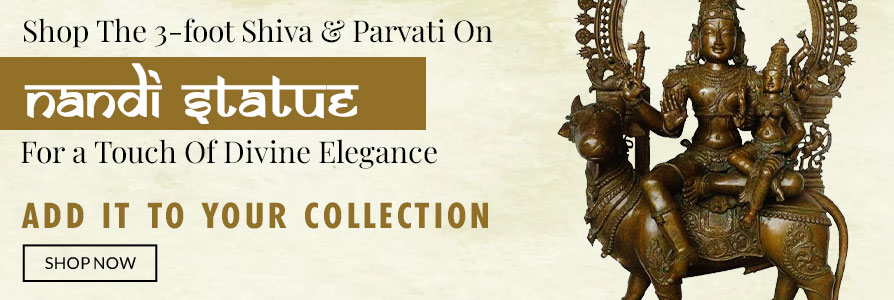
The anthropomorphic form of Adhikara Nandi, as depicted in statues, is enriched by the graceful portrayal of its back hands holding the Parashu and the Mriga, while the front two hands are elegantly folded in the Anjali Mudra. This artistic composition not only symbolizes humility but also accentuates an unwavering devotion to the divine. The seamless fusion of these elements encapsulates the divine essence of Adhikara Nandi, offering a visual narrative that goes beyond mere representation. It creates a worshipful display that transcends the boundaries between the human and the sacred bovine, inviting observers to contemplate the profound connection between the earthly and the divine realms.
This anthropomorphic rendition of Adhikara Nandi, with its intricate details and symbolic gestures, captures the essence of divine grace and profound devotion, offering a visual testament to the harmonious convergence of the human and the sacred bovine nature in worshipful splendor.
Sharing certain divine attributes with Lord Shiva, such as the third eye and matted hair, this form embodies a harmonious fusion of the human and the divine. Both representations of Adhikara Nandi, whether in the traditional bull form or the anthropomorphic human-bull synthesis, serve as powerful visual narratives, encapsulating the profound connections between the divine and the devoted, transcending the boundaries of form and symbolism.
This anthropomorphic rendition of Adhikara Nandi, with its intricate details and symbolic gestures, captures the essence of divine grace and profound devotion, offering a visual testament to the harmonious convergence of the human and the sacred bovine nature in worshipful splendor.
Sharing certain divine attributes with Lord Shiva, such as the third eye and matted hair, this form embodies a harmonious fusion of the human and the divine. Both representations of Adhikara Nandi, whether in the traditional bull form or the anthropomorphic human-bull synthesis, serve as powerful visual narratives, encapsulating the profound connections between the divine and the devoted, transcending the boundaries of form and symbolism.
Legends of Nandi
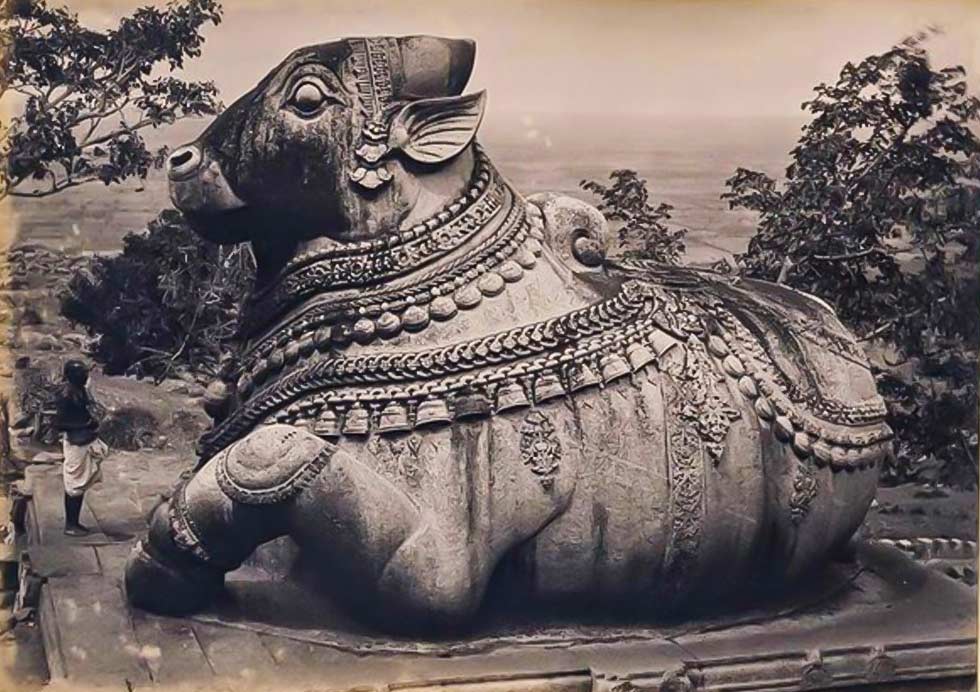
In ancient times, there lived a sage named Shilada, who was deeply devoted to Lord Shiva. Concerned about the lack of heirs, his family approached him, urging him to return to a worldly life and seek progeny. Despite his initial reluctance, Shilada performed intense penance and sought the blessing of Devraj Indra for a child.
However, Indra, despite being pleased, couldn’t grant Shilada the boon of a worthy heir. Undeterred, Shilada turned to Lord Shiva, performing rigorous worship. Impressed by Shilada’s devotion, Lord Shiva appeared and granted him the boon of having a son. It is said that one day, while Shilada was plowing his fields, he discovered a child. He named the boy Nandi and raised him as his own.
As Nandi grew, Lord Shiva sent two sages, Mitra and Varuna, to inform Nandi of his divine purpose. They revealed that Nandi was destined for a short life but would gain immortality through his devoted service to Lord Shiva. Nandi, following their advice, delved into the forest and began worshiping Lord Shiva with unwavering devotion.
His intense penance and dedication pleased Lord Shiva, who not only made Nandi immortal but also appointed him as the chief of his ganas (attendants). Nandi’s commitment extended to guarding the entrances of Lord Shiva’s abode, Kailash.
Nandi’s loyalty and pure-hearted devotion touched the divine, making him not only an immortal being but also the epitome of Bhakti (devotion) in Hindu mythology. His role as Lord Shiva’s vahana and chief gana symbolizes the profound connection between the devotee and the divine.
However, Indra, despite being pleased, couldn’t grant Shilada the boon of a worthy heir. Undeterred, Shilada turned to Lord Shiva, performing rigorous worship. Impressed by Shilada’s devotion, Lord Shiva appeared and granted him the boon of having a son. It is said that one day, while Shilada was plowing his fields, he discovered a child. He named the boy Nandi and raised him as his own.
As Nandi grew, Lord Shiva sent two sages, Mitra and Varuna, to inform Nandi of his divine purpose. They revealed that Nandi was destined for a short life but would gain immortality through his devoted service to Lord Shiva. Nandi, following their advice, delved into the forest and began worshiping Lord Shiva with unwavering devotion.
His intense penance and dedication pleased Lord Shiva, who not only made Nandi immortal but also appointed him as the chief of his ganas (attendants). Nandi’s commitment extended to guarding the entrances of Lord Shiva’s abode, Kailash.
Nandi’s loyalty and pure-hearted devotion touched the divine, making him not only an immortal being but also the epitome of Bhakti (devotion) in Hindu mythology. His role as Lord Shiva’s vahana and chief gana symbolizes the profound connection between the devotee and the divine.
Mythological Significance
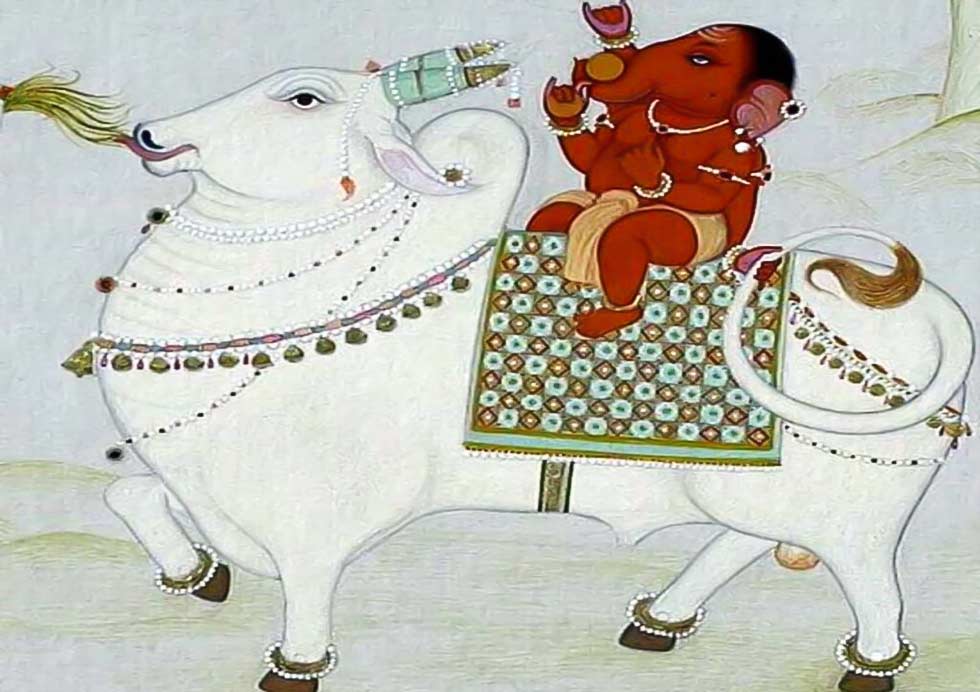
The texts enveloping Adhikara Nandi are intricately woven into the cosmic tales of Shiva. According to legend, Nandi’s origins trace back to a sage named Shilada, who engaged in rigorous penance to beseech the boon of an immortal progeny. Impressed by Shilada’s unwavering devotion, Lord Shiva fulfilled his request with a distinctive condition — Shilada’s son would attain immortality only as long as he assumed the form of a bull.
Upon the birth of the child, Shilada named him Nandi, and he embraced his divine existence with profound dedication to Lord Shiva. Nandi’s unswerving loyalty and devotion captured Shiva’s heart, earning him the esteemed position as the chief among the retinues.
Upon the birth of the child, Shilada named him Nandi, and he embraced his divine existence with profound dedication to Lord Shiva. Nandi’s unswerving loyalty and devotion captured Shiva’s heart, earning him the esteemed position as the chief among the retinues.
The Cosmic Dance
One of the most enchanting aspects of Adhikara Nandi’s presence is his participation in the cosmic dance of Lord Shiva. In the divine dance of Nataraja, Nandi is often portrayed looking towards Shiva with admiration, capturing the essence of the inseparable bond between the master and his chief retinue. This depiction symbolizes the cosmic order and the harmony between the divine forces.
Pilgrimage and Worship
Numerous temples dedicated to Lord Shiva feature Nandi as an integral part of the sacred space. Devotees often pay their respects to Adhikara Nandi before entering the main sanctum, recognizing his role as the divine gatekeeper and messenger of prayers to Lord Shiva.
Conclusion
Adhikara Nandi, the chief among Shiva’s retinues, brings a unique blend of strength, devotion, and symbolism to the rich tapestry of Hindu mythology. His unwavering loyalty and integral role in the cosmic dance emphasize the interconnectedness of divine forces. As we delve into the profound stories and symbolism surrounding Adhikara Nandi, we find inspiration in his steadfast dedication and the sacred dance that continues to mesmerize devotees on their spiritual journeys.


